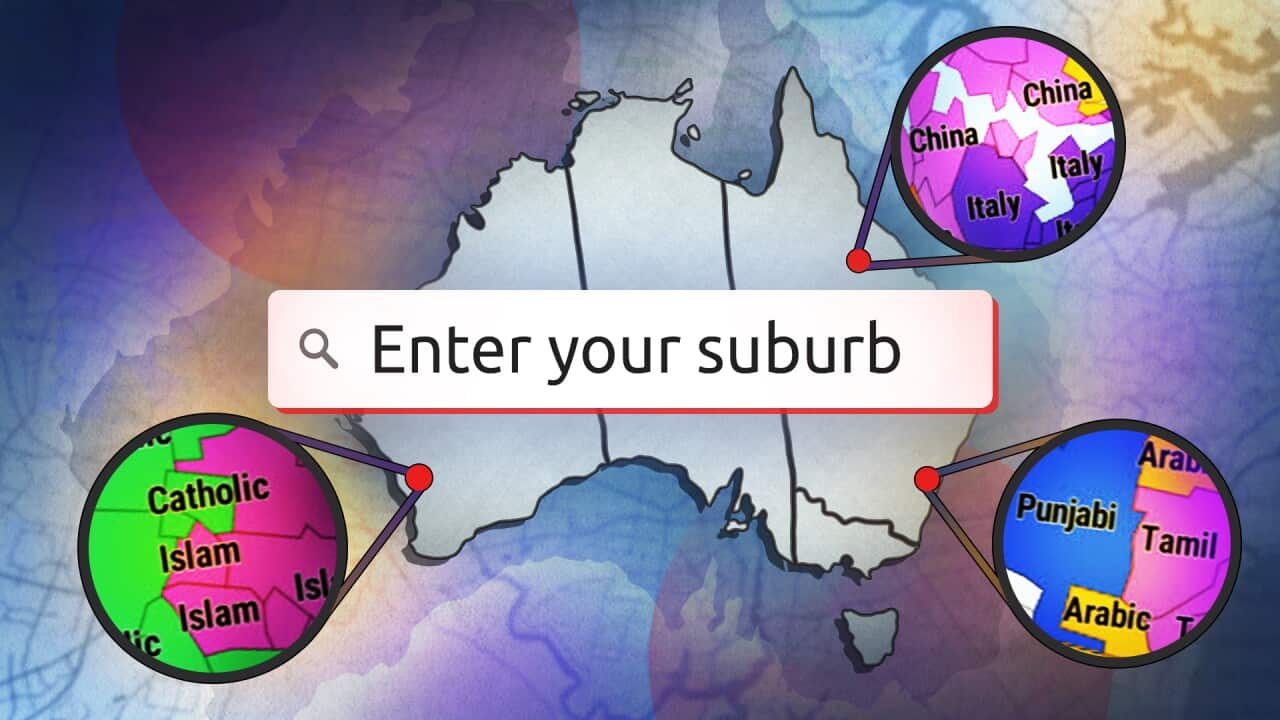Many decades ago, a plan was hatched to resettle thousands of Jewish refugees in a place you wouldn't expect.
It was during the 1930s in Europe when Nazi Germany rose to power, and Jewish people were facing persecution and rampant anti-Semitism.
An organisation called the Freeland League for Jewish Territorial Colonization was searching for a safe home for 75,000 European Jews — and its founder, Isaac Steinberg, had his sights set on northern Australia.
"Genocide was looming, and the Jews needed an escape route," professional provocateur John Safran says in the new SBS documentary Who the Bloody Hell Are We?
"This is the story of how Israel, which ended up in the Middle East, almost ended up in the Kimberley, on the ancestral country of the Miriwoong people."

John Safran (left), Cal Wilson (centre) and Adam Liaw (right) explore Australia's multicultural past in the new SBS documentary Who the Bloody Hell Are We? Source: Supplied / SBS
In the three-part series, Safran, comedian Cal Wilson, and cook and author Adam Liaw explore how people of Jewish, Kiwi and Chinese descent - like themselves - fit into Australia's narrative.
As Safran looks into the history of Jewish Australians, he asks: "How can we fully know ourselves as a country if we're not telling the whole story?"
The Kimberley Scheme
In 1939, Steinberg travelled to Australia to pursue his plan to resettle European Jews in Miriwoong country in eastern Kimberley — Western Australia's northernmost region.
Steinberg was an exiled Russian revolutionary who had served in Vladimir Lenin's government.
"His associates in the Freeland League had their eyes on land in Africa, South America and Palestine. But Steinberg had an almost religious fervour that the Kimberley was destined to be the Jewish homeland," Safran says in the documentary.
Safran explains that by the 1930s, a wealthy Irish Catholic family, the Duracks, "had colonised Miriwoong country, dividing it up into vast cattle stations".
David Newry is a Traditional Custodian of the land. Speaking to Safran, he says the Durack family "wouldn't have survived without the Miriwoong people".
"The Miriwoong people were actually the backbone of the cattle industry, and if they weren’t here at that time, the Duracks would have just packed up and left," he says.

John Safran sits with Miriwoong Elder David Newry in the Kimberley. Source: Supplied / SBS
"What he [Steinberg] was anxious to get across was the picture of the Jewish people as being growers and tillers of the soil, and hardworking people. But the only problem was they never had their own land to work with," Patsy Millett, Durack's granddaughter, tells Safran.
"So we could have had the state of Israel in Western Australia?" he asks.
"That’s quite right. That was Steinberg's idea," she says.
READ MORE

How multicultural is your suburb?
But Newry says his people were never consulted.
"There were people here all the time … but for a development like this, our people weren’t consulted at all," he says.
'One of the ironies of history'
Steinberg arrived in Australia months before the Nazi invasion of Poland and the start of World War Two in Europe.
One movement that was active in 1941 and 1942 was known at the time as the Australia First Movement.
According to the National Archives of Australia (NAA), it was a far-right political movement that "grew out of strong anti-British sentiment and vigorous Australian nationalism". Some of its members were characterised .
According to historian David Bird, the Australia First Movement was "hoping very much for a German victory".
"The only issue about the possibility of an Axis victory in Europe that concerned them was what would happen to the Jews once they were expelled from Europe. Their fear was that many of them would come to Australia," he says in the documentary.
"They were very much opposed to the Kimberley plan."

John Safran explores the history of Jewish Australians in the documentary, Who the Bloody Hell Are We? Source: Supplied / SBS / Ben King
"This theory allowed these extreme racist Australians to incorporate Aboriginal spirituality, Aboriginal history and the Aboriginal experience into a future Aryan Australia. They could create a 'white Dreamtime'," he said.
Bird says the movement was "really the only group at that time who gave voice to Aboriginal concerns that they may be dislodged from the Kimberleys".
"It is one of the ironies of history, that's for sure," he says.
According to the NAA, the movement existed for five months until its leaders and some members were secretly interned in March 1942 on suspicion it might provide help to Japanese invaders.
This led to a Commonwealth Commission of Inquiry between 1944 and 1945.
How close was Australia to having a Jewish homeland in the Kimberley?
According to reports and a book on the scheme written by author Leon Gettler, Steinberg won the support of the West Australian government along with trade union, church and business representatives.
But it was eventually rejected by the Commonwealth government.
The then prime minister, John Curtin, reportedly said in a 1943 letter that the government was "unable to see its way to depart from long-established policy in regard to alien settlement in Australia, and therefore cannot entertain the proposal for a group settlement of the exclusive type contemplated by the Freeland League".
Who The Bloody Hell Are We? is subtitled in Arabic, Simplified Chinese, Traditional Chinese, Vietnamese and Korean. All episodes are available with audio descriptions.
All three episodes of Who The Bloody Hell Are We? are available to stream from Wednesday 19 July. Episode one premiered on SBS on Wednesday 19 July at 7:30pm and continues weekly.

